Caution: Never work around any car battery without good eye protection (better than your prescription glasses). A full face mask is best.
There are very few things more frustrating than discovering you have a dead battery when you need start your car.
Imagine being late for an important appointment only to find out that the engine won’t turn because of a dead battery. This issue can happen to anyone, and there are times when new batteries fall victim to this kind of problem.
So how exactly can you fix it?
First, Check the Terminal Connections

How to Recondition a Car Battery That Won’t Hold Charge
There are some instances where your car battery might need a little push to get going. Here are some simple ways to recondition a car battery that won’t hold charge.
Important note: These methods apply if you have time and are in a financial situation where you can’t afford a new battery at the moment. This isn’t 100%, but it won’t hurt to try. Of course, some batteries are purposely designed in such a way that you can’t open the cells. These methods won’t work on batteries of this type or on “gel” batteries.
Jump-Starting
Jump-starting is a simple process that can breathe some life into your car’s battery. You’ll only need jumper cables and another working vehicle.
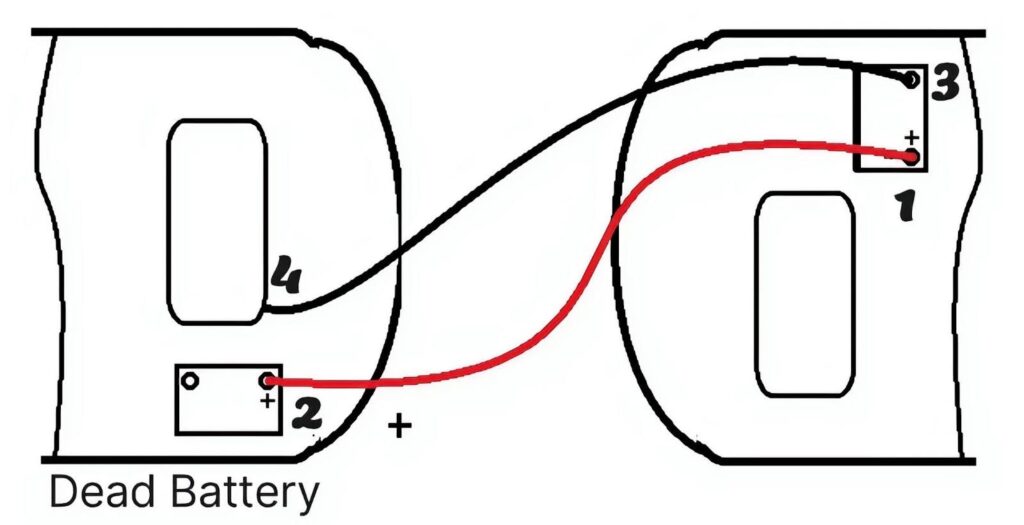
Make sure to use high-quality copper cables when jump-starting a dead battery. When it comes to jumper cables, you get what you pay for; some jumper cables can look good and still not do the job. Again, it’s important that you make the last connection as far away from the working battery as possible to mitigate the possibility of a battery explosion (they do happen.
Create at least a little distance between your vehicle and the one you’ll be drawing charge from. How much distance you can put will be determined by how long your cables.
It’s normal for the cables to spark once they complete the jumping circuit and, again, this is why you make the last connection on the dead vehicle’s engine block. For some new vehicles, you might notice a special ground or a positive power connection located away from the battery for jump-starting purposes and these will sometimes be plainly marked.
Note: Jump-starting is a generic process that you can perform on any vehicle, but keep in mind that there might be some additional precautions to observe, depending on the year, make, and model. Some of the newest vehicles advise against it, so be careful, and don’t connect the cables backwards either. This can ruin a lot of parts.
Always consult the appropriate manual when performing such procedures.
Use an Epsom Salt and Distilled Water Solution
Using Epsom salt is another way to recondition a battery that won’t hold charge. Epsom salt or magnesium sulfate can help dissolve solid salts that have formed around the battery plates over time.
Simply mix one part Epsom salt with three parts distilled water, and pour the solution over the battery cells. After that, you’ll need to charge the battery for about 12 to 24 hours before conducting a load test.

Try Using an Aspirin Solution
Aspirin has acidic properties that can alter a battery’s electrolyte composition.
Crush 12 aspirin tablets into a fine powder, and add about 180 ml of warm water to create the solution. Pour the solution over the positive and negative battery terminals, and add more water to cover all the plates if necessary.
Knowing When to Replace an Old Battery
When your car battery is too far gone, the only thing you can do is replace it with a new one. This is the best way to handle a worn-out battery once you’ve determined that enough of its cold cranking amps are depleted to make it undependable.
But before you do, here are some tests you might want to perform on your battery to know whether or not a replacement is absolutely necessary.
Battery Electrical (Parasitic) Drain Test
A battery electrical drain test determines if there’s a component or circuit that’s draining the battery even when the ignition is off.
Electronically tuned radios, computers, and controllers are some components that draw a slight but continuous amount of current from the battery when the ignition is off.
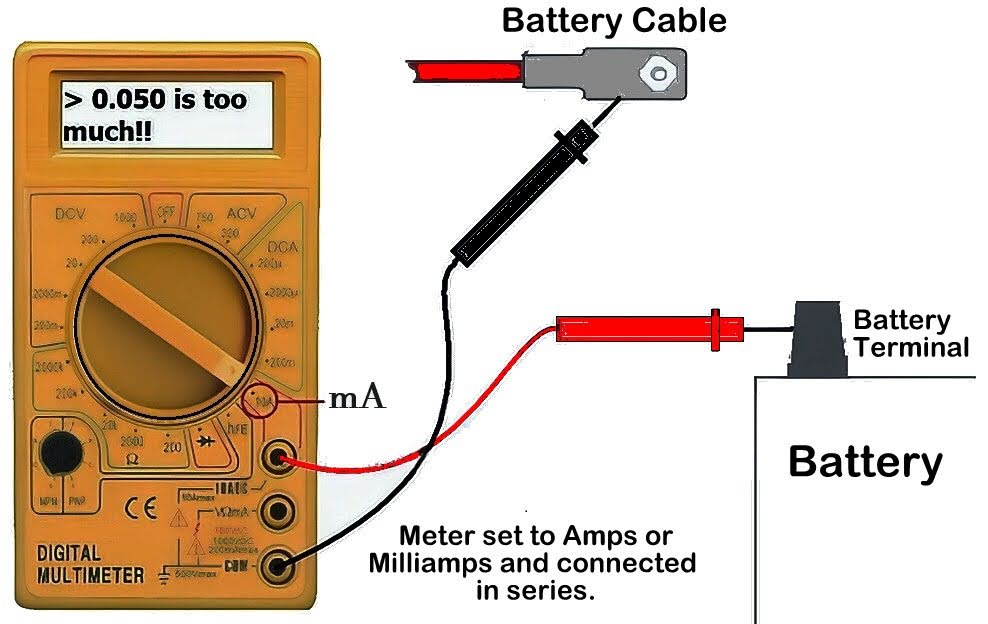
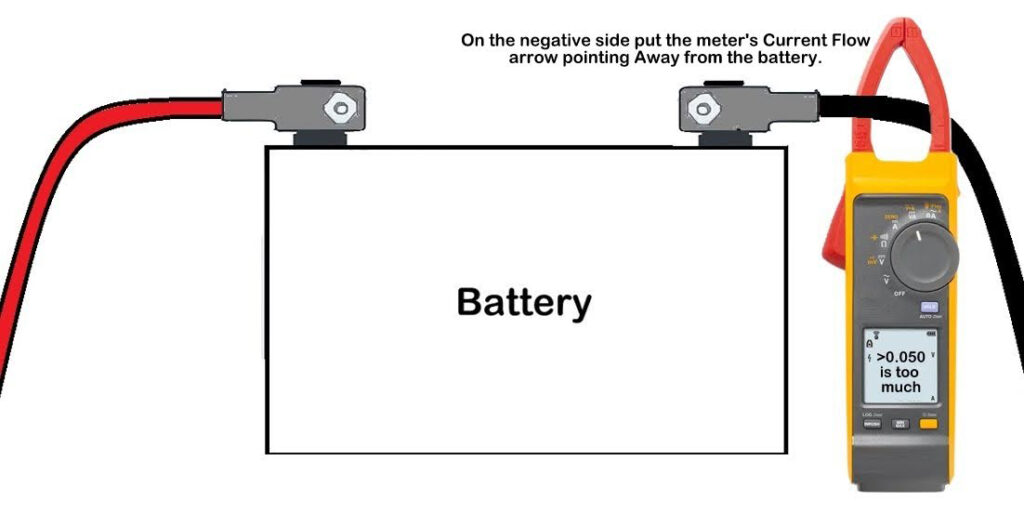
An inductive DC ammeter and a digital multimeter that’s set to read milliamperes are some tools that are used to conduct a drain test (see illustrations).
To find the source of the drain, check to make sure the underhood light, glove compartment light, and trunk light aren’t illuminated when they shouldn’t be. Check interior lights, like map lights kids may have turned on when you weren’t looking. Disconnect fuses one at the time from the underhood junction box and then the inside fuse panels, but make sure you don’t have the door open so that the dome light is on while removing the fuses or you’ll get a false positive result.
If the drain stops after one fuse is disconnected, the source of the drain is located in that particular circuit.
But if the battery drain still exists, check the alternator, starter solenoid, or nearby wiring for any issues. If you don’t know how to do this, take your car to a mechanic.
Battery Load Testing
A battery load test determines the condition of any battery. This method requires a load tester that uses a carbon pile to create an electrical load on the battery.
To perform this test, it’s important to determine the battery’s CCA rating before anything else.
The proper electrical load to be used on the battery should be half of its CCA rating or three times the ampere-hour rating. Once you’ve determined the CCA rating, you can proceed with connecting the load tester to the battery. Apply the load for a full 15 seconds.
During the load testing, the battery should have a reading of above 9.6V. Repeat the test at least one more time to get a more accurate battery condition.
Battery Voltage Test
A battery voltage test can determine the state of charge of any battery.
Also referred to as an open circuit battery voltage test, this procedure is conducted with an open circuit, no current flowing, and no load applied to the battery.
Before attaching a voltmeter to the battery terminals, always make sure that the surface charge has been removed. To do this, turn the headlights on high beam for one minute, turn them off, and wait for at least two minutes.
From there, connect the voltmeter to the battery posts. Read the voltmeter, and compare the results with the state of charge. A negative meter reading could mean two things: an incorrect voltmeter connection or the battery needs to be replaced.
This test should be followed by watching the battery voltage (with eye protection) while attempting to start the vehicle. Check at the battery post, and if the voltage stays steady, move your probe to the battery terminal. Do this first on the positive side and then on the negative side.
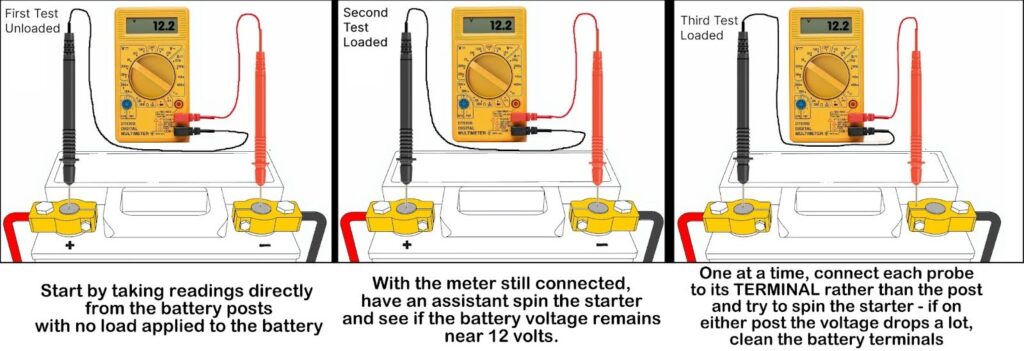
Check at the battery post, and if the voltage stays steady, move your probe to the battery terminal. Do this first on the positive side and then on the negative side.
– Richard McCuistian, ASE Certified Master Automobile Technician
Electronic Conductance Testing
Electronic conductance testing measures how well a battery can create current. It’s usually done on batteries that are under factory warranty and can be performed on test flooded or absorbed glass-type batteries.
A conductance tester sends a small signal through the battery and measures a part of the AC response.
This method isn’t designed to accurately determine the state of charge of a new battery. It should only be used to test batteries that have been in service.
A conductance tester usually displays two results: ”good battery” or “charge and retest.”
However, keep in mind that improper connections to the battery can produce inaccurate results. Also, make sure to turn off all accessories and the ignition switch before conducting the test.
Where to Get a New Battery for Your Vehicle
Repair jobs can only do so much for your battery. In some cases, you’ll have no choice but to buy a new one that won’t die on you during the most random times. Here at CarParts.com, you can get a new battery delivered straight to your doorstep in a jiffy.
We have a wide selection of high-quality batteries sourced from the most trusted brands today. All our products have passed strict quality checks, so you’re sure to get a battery that’s built to last.
Find the right battery for your vehicle by entering its year, make, and model into our vehicle selector. This will narrow down the catalog to compatible batteries for your ride. For a more personalized shopping experience, use the search filters to find a battery according to your preferred brand, price range, quantity, and more.
Order now, and we’ll deliver your battery straight to your doorstep in as fast as two business days.
Check out our products today!
Any information provided on this Website is for informational purposes only and is not intended to replace consultation with a professional mechanic. The accuracy and timeliness of the information may change from the time of publication.





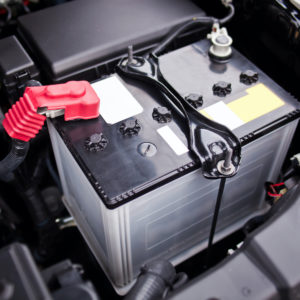























Thanks, I’m going to try these, I have a fairly new battery that won’t hold a charge & my charger isn’t giving a full charge for some reason.